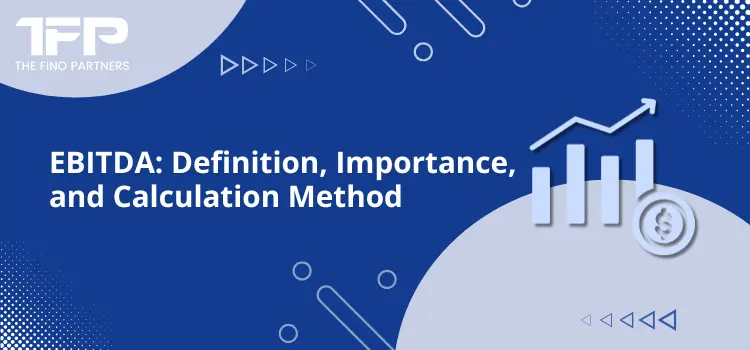If you have ever thought about the financial well being of your business in the US, you might know about EBITDA. It is a well known measure of profitability, but what exactly does it mean and why is it essential for companies? This financial measure is utilized across industries in the US to evaluate company performance.
In this blog, we will learn what EBITDA is, why it matters to companies, and how you can compute it with easy formulas. We will also see the importance of virtual bookkeeping services in the USA for the financial health of your business.
What Is EBITDA?
EBITDA symbolizes Earnings Before Interest, Taxes, Depreciation and Amortization. This is a measure which examines the core operational performance of a business without adjusting for interest on loan, taxes and asset depreciation as time passes.
Think about EBITDA as the ability to generate an income by simply operating your business, prior to any financial obligations like mortgages or tax filings being accounted for. It gives you a much better overall picture of the way the company is performing independently, without external influences affecting the end result.
Why is EBITDA Important?
EBITDA helps you understand a business's financial well being, or at least how effectively a business is operating its daily operations. The reasons why EBITDA is important are:
1. Focus on Core Operations
EBITDA zeroes in on the way the business is performing operationally. It excludes depreciation, interest, and taxes so you can see the performance of the business's core activities without becoming worried about how it's financed or what it pays in other fees.
2. Useful for comparing companies
In case you compare companies across industries, EBITDA is a handy metric. It excludes capital-related and financial expenses, which evens the playing field across businesses. It's especially useful for comparing companies with various debt structures or tax obligations.
3. Helps with Business Valuation
EBITDA is a number that analysts and investors usually utilize to estimate the organization’s worth. It helps them gauge just how much money the business makes through operations and if the company may be worth investing in. A higher EBITDA generally reflects a far more profitable and financially solid company.
4. Measure of profitability
While EBITDA is not the only method to determine profitability, it gives a quick picture of just how much money a business makes before significant expenses like interest rates and debt payments are deducted. This helps you understand the company's financial health.
How to Calculate EBITDA?
Nobody has to be a finance expert to compute EBITDA. There are 2 typical formulas that can assist you to figure it out, depending on your preference.
Formula 1:
EBITDA means Net Profit + Interest + Taxes + Depreciation + Amortization.
This particular formula utilizes total income, the remaining cash after expenses are paid out, after which interest, depreciation, taxes, and amortization are added to provide you with operational profit in a far more basic sense.
Formula 2:
EBITDA means Operating Income + Depreciation + Amortization.
This particular formula starts with operating income, the profit a company realizes from its primary operations. You add back depreciation and amortization like the very first formula.
EBITDA Calculation Example
So say you visit a business's financial report and you want to compute its EBITDA. A very simple example is:
Net Profit: USD 500,000
Interest: USD 50,000
Taxes: USD 100,000
Depreciation: USD 30,000
Amortization: USD 20,000
With Formula 1 you'd calculate EBITDA as follows :.
EBITDA means Net Profit + Interest + Taxes + Depreciation + Amortization.
= USD 500 + USD 50,000 + USD 100,000 + USD 30,000 + USD 20,000.
= USD 700,000
And so the firm has USD 700,000.
EBITDA Margin: Understanding Efficiency
So you computed EBITDA, now let us understand if that is bad or good? That is exactly where EBITDA margin plays a role. You see how much profit a business makes relative to its profits with the EBITDA margin. It uses this formula:
EBITDA Margin can be EBITDA/Total Revenue.
Assume the company in the prior example has USD two million in total revenue. To calculate EBITDA margin:
EBITDA Margin USD 700,000/USD 2,000,000 = 0.335 / 35%.
This would mean 35% profit after interest, taxes, amortization and depreciation of the company. The bigger the EBITDA margin, the greater the business converts earnings to profits.
Advantages of EBITDA
EBITDA has several advantages when understanding a business's profitability and financial performance:
- Simplified perspective of Profitability: Without expenses like interest, taxes, amortization and depreciation, EBITDA provides you with an idea of exactly how well a business's core operations are operating without the sound of capital-related or financial elements.
- Comparison Across businesses: Because EBITDA removes the effects of different financial structures, you can compare companies that have the same market but different financing, tax rates or depreciation schedules.
- Valuation tool for investors: Many Investors value an enterprise using EBITDA. It provides them with a sense of how much cash the company is earning and if the investment is worthwhile.
Final Thoughts
EBITDA is a handy tool to evaluate profitability based on core activities. It eliminates non-operational costs like taxes, depreciation and interest and gives a much better idea of how effectively a business operates. EBITDA could be helpful but should be supplemented by various other economic indicators to make a far more comprehensive picture of any business's economic health.
For assistance with managing your financial metrics and maximizing profitability, turn to The Fino Partners for expert accounting and bookkeeping services.


























